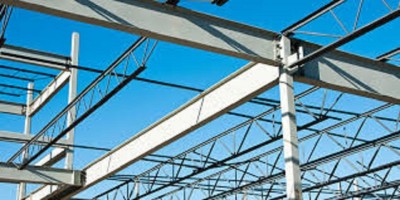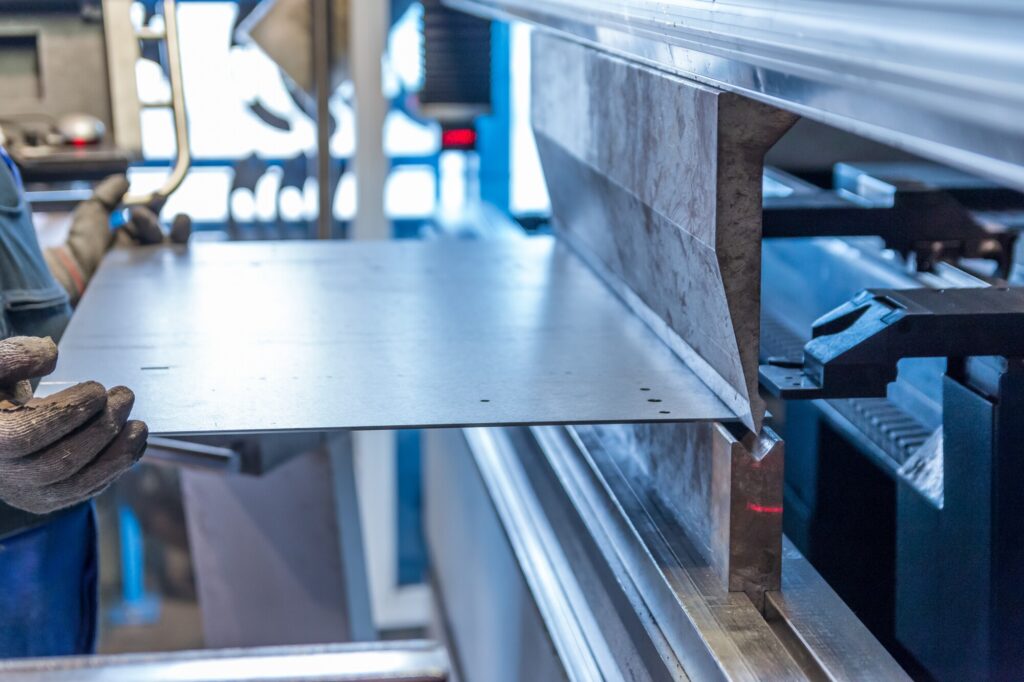Comprehensive Evaluation of Cutting-Edge Techniques in Steel Construction Industry
As the steel fabrication market proceeds to advance, the integration of advanced techniques has actually come to be vital for remaining affordable and meeting the demands of modern manufacturing requirements. In this vibrant market where technology plays a critical function, comprehending the subtleties of these sophisticated strategies is not simply an alternative yet a need for those looking to create ahead in the ever-evolving world of steel construction.
Laser Cutting Improvements
In the realm of steel construction, laser cutting developments have actually changed the accuracy and performance of steel shaping procedures. By taking advantage of the power of concentrated laser beam of lights, producers can currently achieve exceptional levels of precision when puncturing different sorts of metals. This modern technology allows intricate designs to be executed with minimal product waste, making it an economical option for industries needing high accuracy elements.
One of the key benefits of laser cutting is its capability to deal with a large range of materials, including stainless-steel, light weight aluminum, and carbon steel, effortlessly. The process generates clean, burr-free sides, getting rid of the demand for extra finishing actions. Moreover, the non-contact nature of laser cutting lowers the danger of product contamination, leading to higher quality final result.
Moreover, laser reducing devices can be configured to make swift, precise cuts, substantially decreasing manufacturing time compared to typical cutting approaches. This speed and accuracy make laser cutting especially appropriate for automation atmospheres where efficiency is critical. As technology continues to advance, laser cutting is poised to play a significantly important duty in the steel fabrication market.

CNC Machining Innovations
The development of CNC machining modern technologies has ushered in a new period of accuracy and effectiveness in the steel manufacture industry. Computer System Numerical Control (CNC) equipments have actually reinvented steel fabrication by using unrivaled accuracy and repeatability in the manufacturing process. steel fixing. Among the key developments in CNC machining is the integration of sophisticated software program systems that make it possible for real-time surveillance and changes, bring about boosted performance and quality assurance
Furthermore, the development of multi-axis CNC devices has permitted the fabrication of complex steel components with intricate designs that were formerly testing to create. These equipments can do a wide variety of machining operations, including milling, drilling, transforming, and grinding, all with high degrees of precision.
Additionally, the consolidation of automation and robotics in CNC machining has streamlined production procedures, minimized lead times, and reduced the margin of error. This assimilation of innovative technologies not only enhances effectiveness but also makes certain constant quality throughout all produced steel components. To conclude, CNC machining technologies proceed to drive developments in the steel fabrication sector, setting brand-new requirements for precision and productivity.
Automated Welding Technologies
Automated welding technologies have actually transformed the steel fabrication market, enhancing performance and precision in the welding procedure. These advanced modern technologies make use of computer-controlled systems to automate the welding procedure, causing higher performance levels and boosted weld quality. Among the key benefits of automated welding is the ability to do intricate welds with constant precision, decreasing the chance of errors and remodel.
Robot welding systems are at the center of automated welding innovations, supplying exceptional rate and precision. These systems can manage a vast array of welding jobs, from straightforward to detailed, effortlessly (steel fabrication melbourne). By making use of advanced sensors and software program, robot welders can adapt to variations in material and joint geometry, making certain an uniform and trustworthy weld
In addition, automated welding technologies enhance work environment safety and security by decreasing the exposure of human welders to dangerous fumes and intense warm. As the steel manufacture industry remains to develop, integrating automated welding innovations will certainly be crucial for firms looking to remain competitive and satisfy the growing demands for top pop over to this web-site notch bonded items.
Robotics Assimilation in Manufacture
Making use of robotic systems in fabrication processes has become a pivotal strategy for enhancing efficiency and accuracy in modern-day production atmospheres. Robotics see this page assimilation in steel fabrication provides a myriad of benefits, consisting of raised productivity, boosted quality assurance, and boosted precaution. These sophisticated robotic systems are furnished with sophisticated sensing units and programs abilities, allowing them to perform intricate jobs with a high level of accuracy and repeatability.
Among the crucial benefits of robotics combination in steel fabrication is the capacity to automate repeated tasks, such as product handling, reducing, welding, and assembly procedures. This not just speeds up manufacturing cycles yet additionally minimizes the risk of human mistake, causing higher total product quality. Additionally, robotics can operate 24/7, considerably boosting manufacturing output and conference tight task due dates.

3D Printing in Steel Manufacturing
Having reinvented the steel construction industry through robotics combination, the expanding exploration of 3D printing in steel manufacturing is poised to additional breakthrough the realm of modern production techniques. 3D printing, likewise called additive production, supplies unprecedented design flexibility and intricacy, making it possible for the production of intricate steel structures that were formerly unattainable with typical production approaches. By utilizing computer-aided design (CAD) software application, makers can exactly manage the layer-by-layer deposition of steel product, resulting in parts with enhanced geometries and functionalities.
One of the essential advantages of 3D printing in steel manufacturing is its ability to reduce material waste substantially. Unlike subtractive production processes where excess material is cut away, 3D printing just makes use of the essential quantity of steel required for the final part. This performance not only leads to set you back financial savings however likewise aligns with sustainable production techniques by lessening ecological influence.
Furthermore, 3D printing makes it possible for rapid prototyping and customization, allowing for the manufacturing of small batches of complex steel components with brief lead times. As the technology remains to grow and become a lot more accessible, its integration right into mainstream steel construction processes is anticipated to drive advancement and efficiency throughout the market.
Final Thought
Finally, the steel manufacture industry has seen significant improvements in strategies such as laser cutting, CNC machining, automated welding, robotics assimilation, and 3D printing. These sophisticated modern technologies have actually revolutionized the way steel products are manufactured, resulting in boosted accuracy, effectiveness, and cost-effectiveness. Continued investment in these innovative techniques is essential for the industry to stay competitive and meet the needs of modern-day production processes.
As the steel construction industry continues to advance, the assimilation of innovative strategies has actually come to be necessary for remaining competitive and meeting the needs of contemporary manufacturing standards.One of the vital benefits of laser cutting is its capability to manage a wide array of products, including stainless steel, pop over to this site light weight aluminum, and carbon steel, with simplicity.Automated welding innovations have changed the steel construction industry, boosting effectiveness and precision in the welding procedure.Having revolutionized the steel manufacture market through robotics combination, the growing expedition of 3D printing in steel manufacturing is positioned to additional advancement the world of contemporary production methods.In conclusion, the steel construction industry has actually seen significant improvements in strategies such as laser cutting, CNC machining, automated welding, robotics integration, and 3D printing.